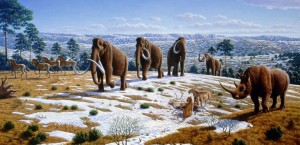“Resurrection Ecology” Is Here.
The “de-extinction” project’s big TEDx conference at the National Geographic headquarters is a wrap but you can watch it in its entirety here. And now the ethical and scientific questions are abuzz, and many people are comparing what their doing to a “Jurassic Park” scenario. The bottom line is the science is not able to use DNA as ancient as dinosaur, so the comparison is not appropriate. So then, what will these ground breaking scientists be “resurrecting”? Think carrier pigeon and woolly mammoth, which, in our opinion, is spectacularly exciting. We wish these science pioneers the very best of luck. We will keep you posted on their progress as they go…
The Promise and Pitfalls of Resurrection Ecology
“Every species becomes extinct eventually. Some leave descendants that continue the evolutionary proliferation of life that kicked off on this planet over 3.5 billion years ago, but no parent species is immortal. Life on Earth is in continual flux, with new lineages emerging as others die back.
But what if we could resurrect lost species? And even if we developed the technology to do so, are such efforts wise during a time when the same attention and energy could be applied to preventing extant species from slipping away? This Friday, researchers are going to converge at the TEDX DeExtinction symposium, partnered with National Geographic, to discuss the possibilities and pitfalls of reviving species that have been lost over the past 12,000 years.
The woolly mammoth – the shaggy Ice Age icon that persisted until a scant 3,700 years ago – is probably the most charismatic “deextinction” candidate…”
For the complete article click here.

